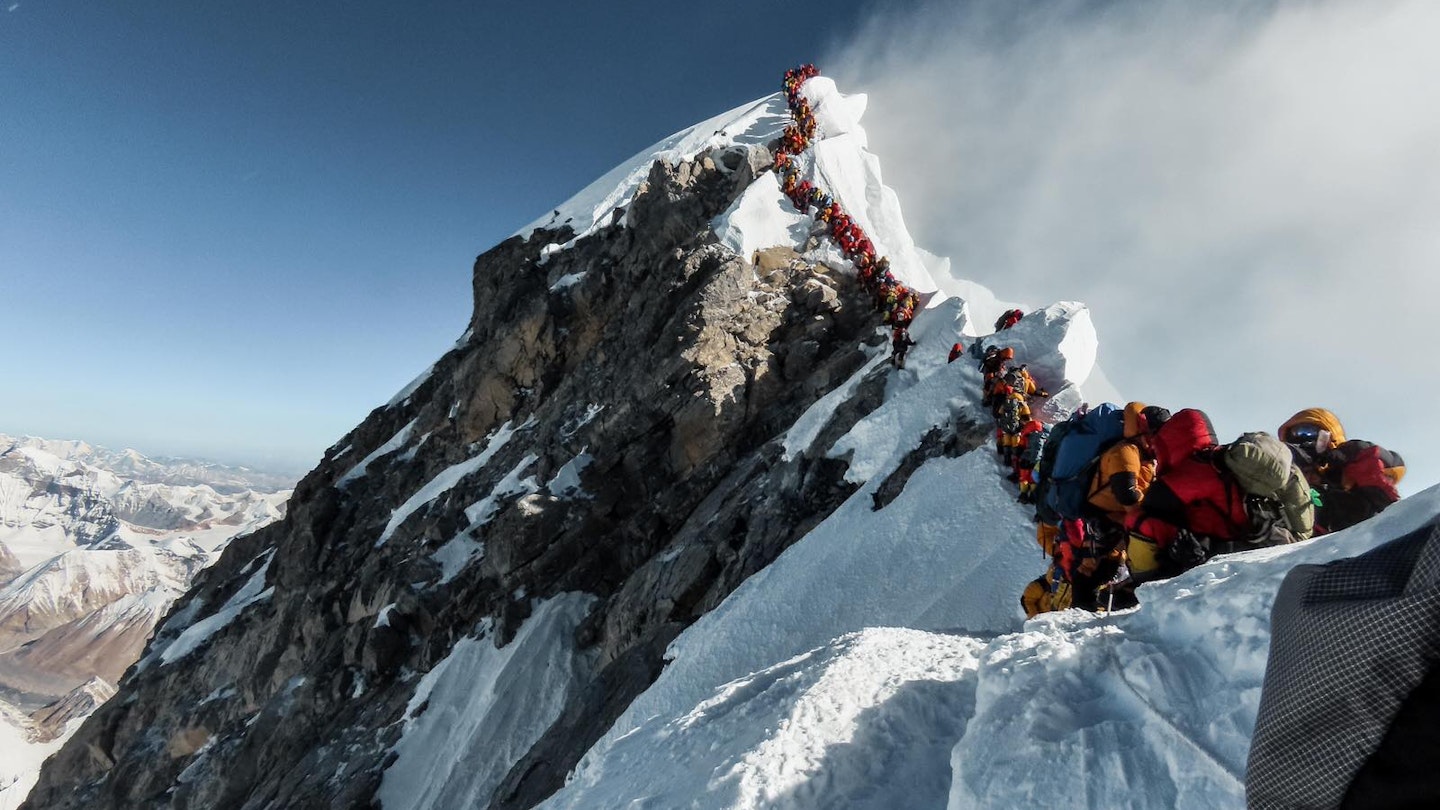The Challenges of Climbing Mount Everest: A Deadly Season
The image of the mountaineer, confronting adversity to claim the summit, has recently taken a few knocks. When Nepali mountaineer Nirmal Purja posted a photo on Twitter of the queues he encountered while ascending and descending Everest on 22 May, it triggered a media avalanche.
As the photo spread online, the world witnessed the astonishing sight of over a hundred climbers in colorful expedition suits, crowding every available resting point on what should be one of the world’s loneliest places. Headlines around the globe reported on the traffic jams occurring at the summit of the world’s highest mountain.
A Deadly Season
However, the initially humorous tone swiftly turned serious. Irish climber Séamus Lawless and Indian climber Ravi Thakar died on the mountain by the time Nirmal Purja reached the summit on 22 May for Project Possible, an ambitious mission to climb all of the world’s 8000m peaks in a single seven-month season to raise money for Nepali veterans and disadvantaged children. By 30 May, the death toll on Everest had reached 11, more than double the toll during the 2018 season, with most fatalities occurring on the crowded southern route from Nepal.
Purja remarked, “Everest was the fourth peak I climbed for Project Possible and I have never seen a mountain so crowded. Obviously, it is dangerous. The more people you have on a mountain, the more time you spend standing still in the cold using up your vital oxygen.”
Prolonged exposure at high altitudes contributed to the majority of deaths on Everest this year. American climber Donald Cash succumbed to altitude sickness, and Indian climber Anjali Kulkarni died from exhaustion on 22 May. Other fatalities included climbers who passed away from similar reasons on 23, 24, and 25 May. Such tragic outcomes emphasize the severe risks associated with high-altitude climbing.

Overcrowding and Summit Fever
The initial fatalities were attributed to the inherent risks of climbing at the limits of human endurance. It is often stated that humans are not made to survive in the oxygen-depleted conditions of the so-called Death Zone above 8000m. However, as the number of deceased climbers mounted, the focus quickly shifted to overcrowding and the immense number of expeditions aiming for the summit during the narrow weather window each climbing season.
Media outlets began discussing “summit fever”—a relentless urge to reach the pinnacle despite clear evidence indicating that the risks outweigh the chances of success. This phenomenon echoes the tragic events of the 1996 Everest disaster, where eight climbers lost their lives as they attempted to summit beyond the designated safe time window. Such history serves as a stark reminder of the costs associated with overzealous ambition on Everest.
Nirmal Purja cautioned, “When you are climbing, you have to know your own body. Many people focus on getting to the summit but you must listen to your body too. Safe climbing relies entirely on knowing when to turn around—for your own safety and for the safety of your Sherpa guides.”

Perils of Altitude
The obsession with summiting Everest has also contributed to the fatalities experienced on the well-trodden—and generally safe—trekking route to Everest Base Camp (EBC). Acute Mountain Sickness (AMS) can be a concern above altitudes of 2500m, yet many trekkers disregard the warning signs in their race to meet deadlines. Each year, between two and five individuals lose their lives on the EBC trek from conditions that could often be mitigated by simply descending to a lower elevation.
For mountaineers, the risks multiply at extreme altitudes. At 8000m, the oxygen availability reduces significantly compared to sea level, leading to severe medical complications and, ultimately, death after prolonged exposure. Even with supplemental oxygen, climbers often begin exhibiting symptoms of mountain sickness prior to their summit attempts.
This intensifies the dangers associated with overcrowding at the summit. Many expedition leaders attribute the majority of 2019 fatalities to climbers exceeding safe time limits in the Death Zone, primarily due to bottlenecks formed during the ascent’s final stages. Such congestion often occurs along the Cornice-Traverse leading from the South Summit or while descending to Base Camp IV.

Changing Priorities on Everest
Climbing Everest has evolved significantly since Edmund Hillary and Tenzing Norgay achieved the monumental first ascent on 29 May 1953. Back then, only a handful of expeditions were permitted into Nepal each year. Out of the 400 participants in the 1953 Hunt Expedition, Hillary and Tenzing were the only climbers to successfully summit.
Today, climbing Everest has become a commercial venture, with inexperienced climbers eager to pay substantial fees for a chance at reaching the summit. The cost per climber for an Everest expedition can range from US$25,000 to over US$100,000. Consequently, the pressures on agencies to facilitate amateur climbers to the peak increase every year, especially with the emergence of budget agencies undercutting more experienced expedition teams.
While all climbers must secure a permit from the Nepali government, there is currently no limit on the number of climbers attempting the ascent each season. A record 381 permits were granted for the 2019 climbing season, and there are growing calls for the Nepali government to implement restrictions on permit issuance to avert future dangerous seasons on the world’s highest mountain.





